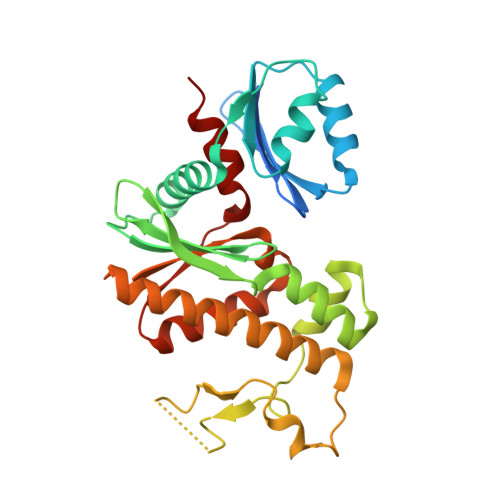Prokaryotic Type II and Type III Pantothenate Kinases: The Same Monomer Fold Creates Dimers with Distinct Catalytic Properties.
Hong, B.S., Yun, M.K., Zhang, Y.M., Chohnan, S., Rock, C.O., White, S.W., Jackowski, S., Park, H.W., Leonardi, R.(2006) Structure 14: 1251-1261
- PubMed: 16905099
- DOI: https://doi.org/10.1016/j.str.2006.06.008
- Primary Citation of Related Structures:
2EWS, 2F9T, 2F9W - PubMed Abstract:
Three distinct isoforms of pantothenate kinase (CoaA) in bacteria catalyze the first step in coenzyme A biosynthesis. The structures of the type II (Staphylococcus aureus, SaCoaA) and type III (Pseudomonas aeruginosa, PaCoaA) enzymes reveal that they assemble nearly identical subunits with actin-like folds into dimers that exhibit distinct biochemical properties. PaCoaA has a fully enclosed pantothenate binding pocket and requires a monovalent cation to weakly bind ATP in an open cavity that does not interact with the adenine nucleotide. Pantothenate binds to an open pocket in SaCoaA that strongly binds ATP by using a classical P loop architecture coupled with specific interactions with the adenine moiety. The PaCoaA*Pan binary complex explains the resistance of bacteria possessing this isoform to the pantothenamide antibiotics, and the similarity between SaCoaA and human pantothenate kinase 2 explains the molecular basis for the development of the neurodegenerative phenotype in three mutations in the human protein.
- Structural Genomics Consortium, University of Toronto, Toronto, Ontario M5G 1L5, Canada.
Organizational Affiliation:


















